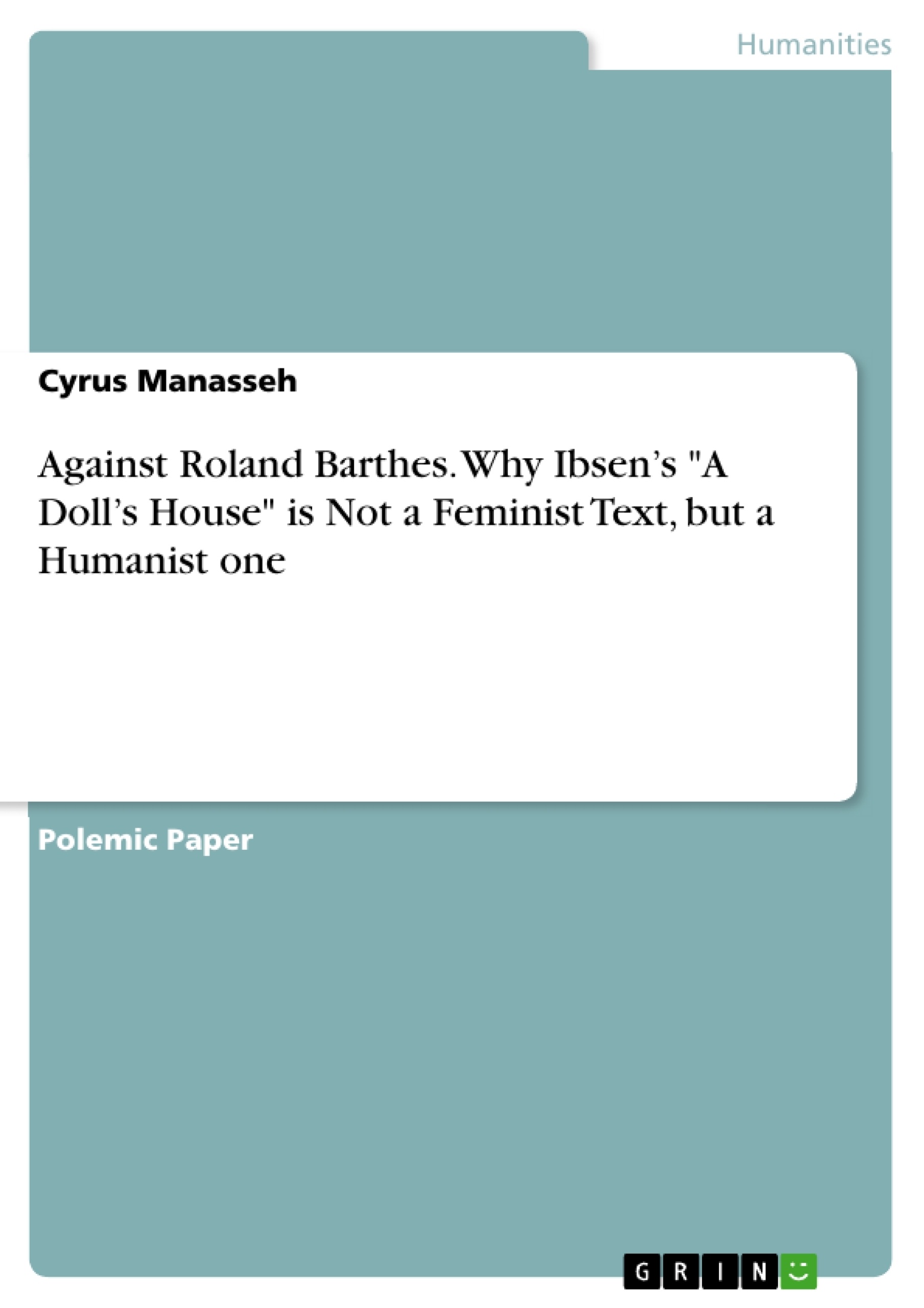Right from its first performance Ibsen’s play has been misunderstood. From early on, "A Doll’s House" until recently, (when it began to be used mostly as a vehicle for feminism and what had been called the ‘woman question’), has not always been popular and a number of criticisms and misunderstandings have plagued it. Many had commented on the fact that within the society, during the time the play was set, that women were made to stay home and take care of the children and support their husbands and that it would be a travesty if they left all of this in order to pursue self-fulfillment. Yet more recently, its popularity has seemed to have steadily increased.
Today, copiously commensurate with Roland Barthes’s 1967 dictum and theory that the author is dead,—(heralding the fact that real fixed ‘meaning’ itself is dead and that texts are constructed out of precariously grouped citations which therefore allow unlimited and arbitrary open-ended interpretations to proliferate in spite of the author of the work’s original intent), today’s unfitting feminism has taken this up in further attempts to achieve greater power and freedom. The problem is that although Ibsen stated that he wrote the play to reflect humanist issues, in much of today’s culture, unfitting feminist interpretations which aim to rewrite the meaning of the play still abound.
Table of Contents
- Ibsen's Play A Doll's House: A Humanist Text
- Nora's Rebellion and the Societal Context
- Torvald's Character and Society's Pressure
Objectives and Key Themes
This essay argues that Ibsen's "A Doll's House" is a humanist text rather than a feminist one. It aims to dismantle common misinterpretations that view Nora's departure as solely a feminist act of liberation from a patriarchal society. The essay examines the play's true purpose, which is to expose the stifling constraints imposed by society on both men and women during the 19th century, ultimately revealing the universal yearning for individual freedom.
- The Societal Pressures on Individuals and Marriage
- The Nature of Freedom and Self-Discovery
- The Role of Reputation and Conformity in Society
- The Complexities of Gender Roles and Expectations
- The Importance of Humanist Values in Understanding Individual Experiences
Chapter Summaries
This essay explores the historical context of "A Doll's House," challenging prevailing feminist interpretations and asserting that Ibsen's work transcends a strictly gendered reading. The essay argues that the play's central theme is the human struggle for individual freedom, a struggle that is shaped by societal pressures and expectations that affect both men and women. It analyzes the play's characters, highlighting the constraints placed upon both Torvald and Nora due to societal norms. The essay deconstructs the idea that Nora's departure is purely an act of feminist rebellion, emphasizing instead its implications for individual liberation and the search for self-discovery.
Keywords
The essay delves into the themes of individual freedom, societal pressures, conformity, gender roles, marriage, and the humanistic perspective. It explores the complexities of human relationships and the inherent limitations imposed by social norms, analyzing the characters of Torvald and Nora in the context of their individual struggles and societal expectations. The essay emphasizes the universal human desire for liberation from societal constraints and the search for self-discovery.
- Quote paper
- PhD, BA Hons. Cyrus Manasseh (Author), 2016, Against Roland Barthes. Why Ibsen’s "A Doll’s House" is Not a Feminist Text, but a Humanist one, Munich, GRIN Verlag, https://www.grin.com/document/318634




